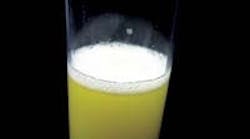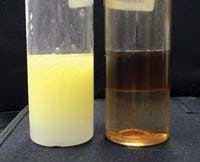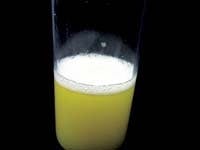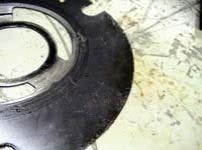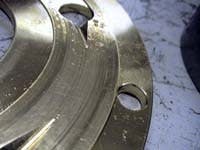The need to move heavy objects with minimum force was first achieved by using levers, then block-and-tackle and, eventually, hydraulic systems. Using a fluid pump and a piston, the hydraulic system moves heavy loads with minimal effort. It’s thought that the Romans used the first hydraulic systems more than 2,000 years ago. Widespread use of hydraulics for industrial applications began during the early 20th century. Hydraulic systems are now considered vital components in most every manufacturing process, including injection molding, metal fabrication, materials handling and food processing. Unfortunately, because hydraulic systems work so hard, they’re susceptible to many problems that can lead to costly equipment failure.The systems use motors, pumps, tubing, pistons, valves, sensors and electronics, all of which can experience their own problems leading to downtime, additional labor costs and part replacement. But the hydraulic fluid itself plays a significant role in system reliability. It transfers power, but it must also lubricate and cool while protecting against contaminants, rust and corrosion. In universal hydraulic systems, the fluid also serves as a torque fluid, gear oil and wet-brake fluid. Selecting the best hydraulic fluid is essential for increased equipment reliability. To understand selection criteria, it’s important to understand the roles of hydraulic oil in preventing or contributing to failuresYou ask a lot
Hydraulic fluid performance requirements are developed from failures and performance standards. To understand the requirements, identify causes of downtime, parts replacement and labor costs. Then, identify the standards to be used as basic performance levels. Hydraulic fluid has several functions, all of which can be affected by the following problems:
Water causes corrosion
Hydraulic fluid performance requirements are developed from failures and performance standards. To understand the requirements, identify causes of downtime, parts replacement and labor costs. Then, identify the standards to be used as basic performance levels. Hydraulic fluid has several functions, all of which can be affected by the following problems:
|
View related content at PlantServices.com |
- Leaking seals —one drop every 10 seconds equals 70 gal. per year. A drop every second represents 420 gal. annually. Leaking seals can also contribute to low oil levels that cause erratic operation, pump cavitation, high operating temperature and contaminant entry.
- Solid contamination — airborne dirt, dust and fibers enter through leaking seals, vents and breathers and during oil addition or change-out. Solid contaminants between five and 15 microns are the major source of pump failure. The hydraulic system filter that removes only particles larger than 10 microns allows the smaller particles to pass through. A worn vane pump rotor can’t be rebuilt if the vane slots are worn more than 0.02 in.
- Moisture contamination — whether from high relative humidity or through leaking seals, moisture can condense and form water droplets that saturate the fluid (Figure 1). The result is accelerated fluid oxidation, foaming, overheating, rust and corrosion.
- Foaming and aeration — normal operation can mix air and oil (Figure 2). Foam leads to non-lubricated hot spots, which contribute to excessive pump cavitation and wear. Pump cavitation can develop into erratic operation, which can lengthen production times and contribute to part quality issues.
- Fluid oxidation — accelerated contact with yellow metals, which are common in hydraulic systems, every 15°F increase in operating temperature beyond 150°F doubles the oxidation rate and shortens fluid life by 50%. Oxidation can thicken the fluid and produce acids, sludge, varnish and gum. Valves start sticking and deposits build up on sensors, pumps and bearings (Figure 3). Pressure and temperature readings become inaccurate, components wear and lines plug.
Water causes corrosion
Figure 1. High humidity or leaking seals can lead to water droplets that saturate the fluid, acceleerating fluid oxidation and causing foaming, overheating, rust and corrosion. Foam ruins pumps
Figure 2. Agitated hydraulic oil produces foam, which can lead to non-lubricated hot spots that contribute to excessive pump cavitation and wear. Deposits damage parts
Figure 3. Fluid oxidation can thicken the fluid and produce deposits (left) that cause valves to stick and build up on sensors, pumps, bearings and lines. Contaminated fluid can cause scoring (left). Various standardized tests determine and verify hydraulic-fluid performance. A comprehensive list of tests for characterising and establishing performance criteria for a hydraulic fluid is presented in Table 1. [To view Table 1, click on the Download Now button at the bottom of this article.] These tests and their results are associated with sources of equipment failure. The table also describes problems or failure sources, the fluid propoerty, the test method and how to intepret the test results. The table shows slection criteria based on poor, average, and excellent hydraulic fluid performance.It is possible to identify the various failure sources and to establish performance levels for maximum reliability and increased hydraulic system life. Using the performance criteria to select hydraulic fluid is the first step in developing a reliability-centered equipment maintenance program.Michael Holloway is director of technical development for NCH Corp. Contact him at mailto:[email protected] or (972) 438-0030.
Figures courtesy of NCH Corp.
Figures courtesy of NCH Corp.
Sponsored Recommendations
Sponsored Recommendations
April 14, 2025
April 14, 2025
April 14, 2025
